Amino acid added to baby food
Signs and Symptoms for using Amino Acid-Based Formulas
When a baby with food allergies needs formula, they need a formula that won’t trigger an allergic response. Hypoallergenic formulas are tailor-made for infants with food allergies. A hypoallergenic formula provides protein from either peptides (extensively hydrolyzed protein, to be exact) or from non-allergenic amino acids. But extensively hydrolyzed formulas (eHF) and amino acid-based formulas (AAF) aren’t the same. An eHF manages symptoms for most infants with CMA (at least 90% of uncomplicated cases, closer to 60% for more severe cases), whereas AAFs are usually used after an eHF “fails” to fully improve symptoms, or for more severe cases. But sometimes the best first choice is an AAF. This leads parents to wonder: how do doctors choose which one to try first for infants with CMA? Will my doctor recommend an eHF or an AAF, like Neocate?
Let’s review potential signs healthcare professionals could look at to determine if a hypoallergenic amino acid-based formula, like Neocate, should be used instead of an eHF to manage cow milk allergy.
Available Types of Baby Formula
First, let’s review available types of baby formulas. The below table provides quick insight into the different types. Understanding formula differences is important in cow milk allergy (CMA). Infant formulas vary by the kind of protein used to make them and the size of the protein. The source and size of protein also determine how allergenic – or likely to trigger an allergic reaction – a formula is.
| Protein Structures in Formulas | Source of Protein | Protein Type / Form | Allergic Reaction Potential |
| Whole protein Cow/Soy milk protein |
Cow Milk Goat Milk |
Whole Protein Casein or Whey |
Most Allergenic Least Allergenic |
| Soy Milk | Whole soy protein & soy isolate | ||
|
Peptides (hydrolyzed protein) |
Partially or Extensively Hydrolyzed | Fragments of cow milk protein Casein hydrolysates or Whey hydrolysates |
|
| Amino acids Not derived from dairy or soy |
NEOCATE |
100% Amino acids |
View Table Larger
If you’re still curious, read more about the different types of baby formulas.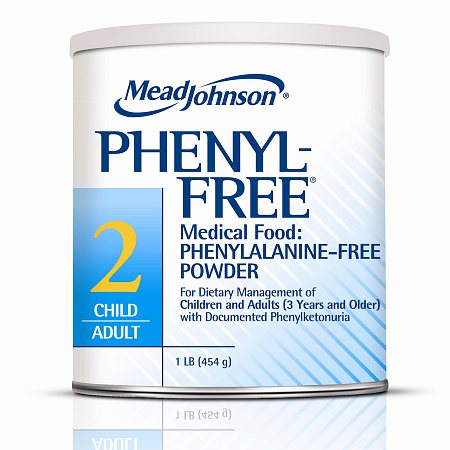
So, how does your little one’s doctor know which formula to recommend first? The signs and symptoms of a cow milk allergy can vary. An infant with food allergies often shows more than one of these. Here are the common ones a doctor or dietitian might look for to consider amino acid-based formula like Neocate.
Signs and Symptoms for Using Amino Acid-based Formula for Cow Milk Allergy
1. Symptoms Not Resolved on an Extensively Hydrolyzed Formula (eHF)
Healthcare professionals often refer to medical guidelines for managing food allergies. Most of the time they recommend an eHF first to manage CMA. But if food allergy symptoms don’t sufficiently improve within a few weeks, an AAF like Neocate should be used next instead of a different eHF. The reason? If a child “fails” on one eHF, they will probably “fail” on other eHFs. (“Failure” means symptoms don’t fully resolve.)
If your child is taking an eHF and you still see possible signs and symptoms of a cow milk allergy, please discuss with your doctor.
2. Poor Growth
Sometimes a child does not gain weight or grow at the rate expected. (Doctors may call this “failure to thrive” or “growth failure” or “faltering growth.”) Children whose severe food allergies aren’t under control may have poor growth. For these children, poor growth often overlaps with other conditions.
When poor growth shows up with GI tract and/or skin symptoms, guidelines suggest choosing an AAF, like Neocate, over an eHF. That’s because skin symptoms can signal inflammation that can increase nutrient needs, leading to poor growth. And gastroesophageal reflux related to severe CMA may be associated with poor weight gain and unresponsive to management.
Another combination – poor growth plus multiple food allergies – can lead clinicians to consider an AAF like Neocate. That’s because infants with multiple food allergies often have more severe cases. And infants who have to avoid 3 or more foods due to allergies have been found to have worse growth.
3. Severe Gastrointestinal (GI) Allergies
Many cow milk allergy signs and symptoms often relate to the digestive tract (GI tract). The gastrointestinal tract is the passage from the mouth to the anus that digests food. The GI tract also includes the esophagus, stomach, small intestine or duodenum, jejunum, and ileum, large intestine or colon, and rectum. Allergic conditions that affect the GI system can be severe and might indicate the need for a hypoallergenic AAF like Neocate.
Specific conditions the healthcare team might look for are food protein-induced enterocolitis syndrome (FPIES) and eosinophilic esophagitis (EoE). These can come with severe GI symptoms, like vomiting or reflux, and cow milk allergy is often part of these conditions. Blood in the stool that doesn’t respond to management can also signal a severe GI allergy.
Your child’s doctor will decide what signs or conditions are severe.
4. Anaphylaxis
Anaphylaxis (or anaphylactic) reactions to food allergens can be severe and life-threatening, and an acute reaction to cow milk happens in between 1%-9% of CMA cases. In patients who have had anaphylaxis to cow milk, guidelines recommend a hypoallergenic amino acid-based formula, like Neocate.
In patients who have had anaphylaxis to cow milk, guidelines recommend a hypoallergenic amino acid-based formula, like Neocate.
Other Factors the Medical Team Might Consider
The signs and symptoms of CMA vary. Some have not been studied as much as others, meaning the guidance can vary. And the evidence available for which formula type to use first in some scenarios or conditions is less clear, because they often overlap with other symptoms. In those cases, an eHF is usually the first choice. Here are some symptoms that healthcare teams might consider when deciding which type of hypoallergenic formula to use.
Severe Eczema
Eczema, or atopic dermatitis, is a skin rash. Some patients have both eczema and food allergies. Roughly one-third of children with moderate-to-severe eczema also develop food allergies. It can be hard to link eczema to specific food triggers because eczema flares can be delayed, and the skin needs time to heal.
Most medical guidelines recommend that an eHF should be tried first for infants with CMA and eczema, with some suggesting an amino acid-based formula like Neocate for those with severe eczema when fed breast milk. However, until there’s better research, an eHF should be tried first for severe eczema. But as covered above, for infants with poor growth and severe eczema, an AAF like Neocate should be considered.
However, until there’s better research, an eHF should be tried first for severe eczema. But as covered above, for infants with poor growth and severe eczema, an AAF like Neocate should be considered.
Multiple Food Allergies
Did you know that about one third, or 33%, of cow milk allergy patients may develop allergies to other foods? In such cases, these patients have multiple food allergies (MFA). Children with allergies to multiple foods tend to have more severe allergies. Like severe eczema, some guidelines have suggested skipping extensively hydrolyzed formula and going straight to AAF for these patients. However, this is based on limited science, so doctors should recommend an eHF first for infants with MFA alone. An AAF like Neocate can be recommended first for infants who show both poor growth and multiple food allergies.
Cow Milk Allergy Symptoms while Fed Breast Milk
Breast milk is the preferred nutrition for infants, and Nutricia supports feeding breast milk wherever possible. You may be surprised to learn that infants with cow milk allergy can have symptoms to breast milk. That’s because dairy protein in Mom’s diet can lead to fragments of cow milk protein in breast milk. These fragments can be similar in size to the peptides in eHFs. For infants who react to cow milk protein fragments in breast milk, Mom may need to eliminate dairy from her diet: The doctor will advise if this is needed, and it should always be done under medical supervision.
You may be surprised to learn that infants with cow milk allergy can have symptoms to breast milk. That’s because dairy protein in Mom’s diet can lead to fragments of cow milk protein in breast milk. These fragments can be similar in size to the peptides in eHFs. For infants who react to cow milk protein fragments in breast milk, Mom may need to eliminate dairy from her diet: The doctor will advise if this is needed, and it should always be done under medical supervision.
When formula is needed for these babies to supplement or replace breast milk, some guidelines have suggested using an AAF like Neocate first based on limited data. However, an eHF should be tried first. A formula like Neocate should be used if the baby doesn’t tolerate an eHF.
If you see signs of food allergies while feeding breast milk, consult a doctor.
Symptoms for using Amino Acid-Based formulas
My Baby Has at least One of the Four Signs and Symptoms for Using Amino Acid-based Formula – What Should I Do?
If you suspect food allergies, ask your child’s doctor for a thorough evaluation.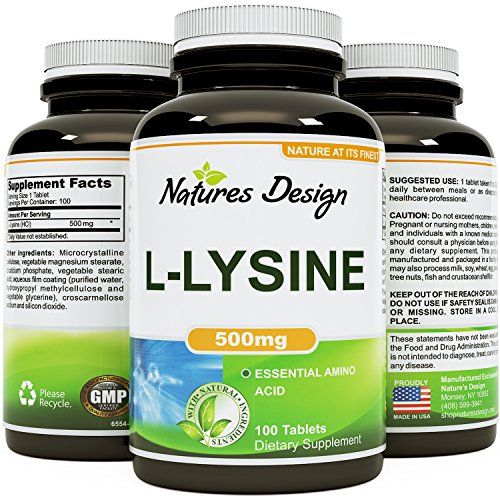 The doctor will ask you questions and assess whether your child is showing signs and symptoms of food allergies. Not sure where to start your discussion? While you wait for the appointment, review questions you can ask your doctor that might be helpful.
The doctor will ask you questions and assess whether your child is showing signs and symptoms of food allergies. Not sure where to start your discussion? While you wait for the appointment, review questions you can ask your doctor that might be helpful.
Once CMA is diagnosed, the doctor might recommend Neocate Syneo Infant. This is the first and only hypoallergenic formula with the benefits of prebiotics and probiotics. Read more about Neocate Syneo Infant and what makes it unique.
If you have an older child diagnosed with food allergies, your doctor may recommend Neocate Splash. Neocate Splash is the first and only hypoallergenic amino acid-based formula that’s ready to drink. Learn more about great-tasting, convenient Neocate Splash.
Have more questions about symptoms for using amino acid-based formula? Ask us in the comments below!
-Rob McCandlish, RDN
Rob McCandlish is a registered dietitian nutritionist (RDN) who joined Nutricia in 2010. He has spent years talking with Neocate families, working with Neocate products, and learning about the science behind Neocate and food allergy research. Rob has two nephews who both used Neocate for their cow milk allergies!
Rob has two nephews who both used Neocate for their cow milk allergies!
Last updated December 2020.
Published: 08/31/2018
When to Choose an Amino Acid Formula
When to Choose an Amino Acid Formula
Healthcare Insights
Published by Laura Dean, RDN, LD Pediatric Dietitian Norton Children’s Medical Group, Pulmonology on Apr 05, 2022
This blog post is sponsored by Reckitt/Mead Johnson Nutrition.
Becoming a parent comes with lots of decisions and learning. One of those decisions is about how you will feed your baby. We have all heard that breast is best, and as a Registered Dietitian, I agree, but I also know that there are times when fed is best, and that can mean choosing formula. Choosing to provide baby formula can be a good decision for you and your baby but determining which formula can be overwhelming.
If you have ever walked down the infant formula aisle at the grocery, you know that there are many options. Infant formulas are designed with the right balance of nutrients to meet the needs of babies. Most formula is made specifically to be similar to breast milk, and if your baby is born full-term and does not need a more special formula, then a standard term formula will provide the nutrition they need. The difference comes when you need a more specialized formula.
Infant formulas are designed with the right balance of nutrients to meet the needs of babies. Most formula is made specifically to be similar to breast milk, and if your baby is born full-term and does not need a more special formula, then a standard term formula will provide the nutrition they need. The difference comes when you need a more specialized formula.
There are three main types of infant formula; the most basic formula standard infant formula is a formula that is made from cow’s milk and is designed to be close to breast milk. Like breast milk, standard infant formulas are about 20 calories per ounce. Their protein is intact or whole, meaning your baby has to break down the protein as it is digested. These formulas are often well tolerated by most babies. If your baby is experiencing some mild digestive concerns, your pediatrician or dietitian may suggest a partially hydrolyzed formula.
Partially hydrolyzed formulas are formulas where the proteins are partly broken down and easier to digest. Babies with suspected cow’s milk allergy are often changed to a partially hydrolyzed formula, and those babies do very well. These formulas may also be used for babies who struggle with reflux or even constipation. These are 20 calories per ounce when made based on the package directions like standard formulas.
Babies with suspected cow’s milk allergy are often changed to a partially hydrolyzed formula, and those babies do very well. These formulas may also be used for babies who struggle with reflux or even constipation. These are 20 calories per ounce when made based on the package directions like standard formulas.
The third type of formula is an amino acid or elemental formula; these formulas are completely free of dairy and have very broken-down proteins. These formulas are specifically designed for babies with food allergies or who cannot tolerate other formulas due to medical reasons. Amino acid formulas may be used if a baby is not gaining weight well and needs something more broken down. These formulas are typically well-tolerated and provide the right balance of nutrients for babies to grow. When mixed according to package directions, they are 20 calories per ounce like breast milk.
There are several reasons to choose an amino acid formula. This should always be done under the supervision of a healthcare provider.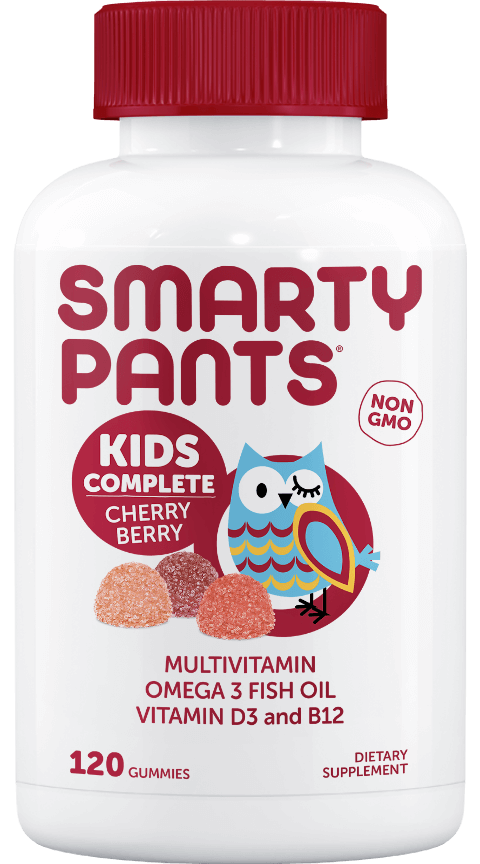 We often think of using amino acid formulas for babies with a protein allergy; however, they may also be used for babies with other medical conditions who struggle with poor growth. We can also use amino acid formulas to improve tolerance when nothing else is working. Improved tolerance can include easier bowel movements, reduced spit-up or vomiting, reduced fussiness or gas, and can improve growth when babies are not growing well on other formulas. Because Amino acid formulas are so broken down, they are easy for babies to take in their nutrients, which is why we often see improved growth and development using these types of formula.
We often think of using amino acid formulas for babies with a protein allergy; however, they may also be used for babies with other medical conditions who struggle with poor growth. We can also use amino acid formulas to improve tolerance when nothing else is working. Improved tolerance can include easier bowel movements, reduced spit-up or vomiting, reduced fussiness or gas, and can improve growth when babies are not growing well on other formulas. Because Amino acid formulas are so broken down, they are easy for babies to take in their nutrients, which is why we often see improved growth and development using these types of formula.
No matter how you choose to feed your baby, be confident in your decision and willing to learn about your baby and their specific needs. Talk to your pediatrician if you have any concerns about your baby’s feeding or growth.
Laura is an experienced Registered Dietitian with a demonstrated history of working in the hospital & health care industry. Skilled in Clinical Nutrition, Medical Nutrition Therapy, Pediatrics, Cardiology, Pulmonology, Gastroenterology, and General Nutrition. A strong healthcare services professional: Board Certified in Pediatric Nutrition with a Master of Arts focused in Family and Consumer Sciences/Human Sciences and a Bachelor of Science in Nutrition and Dietetics.
Skilled in Clinical Nutrition, Medical Nutrition Therapy, Pediatrics, Cardiology, Pulmonology, Gastroenterology, and General Nutrition. A strong healthcare services professional: Board Certified in Pediatric Nutrition with a Master of Arts focused in Family and Consumer Sciences/Human Sciences and a Bachelor of Science in Nutrition and Dietetics.
« Previous Blog Post Next Blog Post »
Development of Beverage Powder Recipes with L -Arginine Intended AS Baby Food
Development of dry drink recipes with L -Arginine for baby food
Scientific article 9000
Simonenko Simonenko. 1 , Manuilov B.M. 2 , Antipova T.A. 3 , Simonenko E.S. 4 , Kopytko M.S. 5, *
1 ORCID: 0000-0002-6999-5048;
2 ORCID: 0000-0001-6167-1017;
3 ORCID : 0000-0002-0365-4806;
4 ORCID: 0000-0002-2878-8069;
5 ORCID: 0000-0002-8235-8457;
1, 2, 3, 4, 5 Research Institute of Baby Nutrition - branch of the Federal Research Center for Nutrition, Biotechnology and Food Safety, Istra, Russia
* Corresponding author (info[at]niidp. ru)
ru)
Abstract
In developed countries, the number of overweight and obese children is increasing every year. Among the main reasons are considered malnutrition and unhealthy lifestyle. The results of medical studies prove that the introduction of L-arginine into the diet in obese patients leads to a significant decrease in body weight. L-arginine is one of the most important biologically active substances involved in numerous metabolic processes in the body. The purpose of this work is to develop a technology for functional baby food products using arginine. An important area of work was the creation of a product containing L-arginine with a functional effect on the body's metabolic processes, with optimal organoleptic properties, as well as a long shelf life and ease of use. According to the results of the research, the recipes for a drink intended for use in the diet of obese children have been developed. The combination of ingredients in the recipes made it possible to mask the unpleasant smell and taste of the added amino acid L-arginine as much as possible. The composition of the recipe includes L-arginine, dry extract of rose hips, fructose, citric and ascorbic acids, natural flavors. Based on the results of the organoleptic evaluation of the product, a variant of the product in the form of a dry water-soluble drink based on rose hip extract was selected for further research. The optimal dosage of L-arginine was 2000 mg/200 ml of the ready-to-use product.
The composition of the recipe includes L-arginine, dry extract of rose hips, fructose, citric and ascorbic acids, natural flavors. Based on the results of the organoleptic evaluation of the product, a variant of the product in the form of a dry water-soluble drink based on rose hip extract was selected for further research. The optimal dosage of L-arginine was 2000 mg/200 ml of the ready-to-use product.
Key words: baby food technologies; metabolism; obesity, amino acid L-arginine.
DEVELOPMENT OF BEVERAGE POWDER RECIPES WITH L-ARGININE INTENDED AS BABY FOOD
Research article 1 Manuylov B.M. 2 , Antipova T.A. 3 Simonenko E.S. 4 , Kopytko M.S. 5, *
1 ORCID: 0000-0002-6999-5048;
2 ORCID: 0000-0001-6167-1017;
3 ORCID : 0000-0002-0365-4806;
4 ORCID: 0000-0002-2878-8069;
5 ORCID: 0000-0002-8235-8457;
1, 2, 3, 4, 5 Research Institute of Baby Food - branch of the Federal Research Center for Nutrition, Biotechnology and Food Safety, Istra, Russia
* Corresponding author (info[at]niidp. ru)
ru)
Abstract
In developed countries, the number of overweight and obese children is increasing every year. Among the main reasons are improper nutrition and lifestyle. The results of medical studies prove that the introduction of L-arginine into the diet in obese patients leads to a significant decrease in body weight. L-arginine is one of the most important biologically active substances involved in numerous metabolic processes of the body. The purpose of this study is to develop the technology of functional baby food products using arginine. An important area of the study was the creation of a product containing L-arginine with a functional effect on the metabolic processes of the body and has optimal organoleptic properties, as well as a long shelf life and ease of use. The study develops the formulations of the drink intended for use in the diet of obese children. The combination of ingredients in the formulations made it possible to conceal the unpleasant smell and taste of the added amino acid L- arginine as much as possible. The composition of the formulation includes L-arginine, dry extract of rosehip fruits, fructose, citric and ascorbic acids, natural flavors. Based on the results of the organoleptic evaluation, a product variant in the form of a water-soluble powder beverage based on rosehip fruit extract was selected for further research. The optimal dosage of L-arginine amounted to 2000 mg/200 ml of the ready-to-use product.
The composition of the formulation includes L-arginine, dry extract of rosehip fruits, fructose, citric and ascorbic acids, natural flavors. Based on the results of the organoleptic evaluation, a product variant in the form of a water-soluble powder beverage based on rosehip fruit extract was selected for further research. The optimal dosage of L-arginine amounted to 2000 mg/200 ml of the ready-to-use product.
Keywords : technologies of baby food products; metabolism; obesity, amino acids L-arginine.
Introduction
L-Arginine is one of the most important biologically active substances (nutrients) involved in numerous metabolic processes in the body. From a biochemical point of view, L-arginine is the L-isomer of the natural amino acid arginine. L-arginine is involved in almost all major metabolic cycles in the body. Being a conditionally essential amino acid (at different age periods of life it is produced in the body), it should be remembered that at an early and old age, with a number of diseases, its level may be lower than physiological. The lack of L-arginine leads to various metabolic disorders and the development of pathological conditions [1], [2]. In children, amino acid deficiency leads to a decrease in the production of growth hormone, as well as a violation of lipid-carbohydrate metabolism, which often leads to overweight, obesity and the development of a diabetic state [3], [4], [5]. There is an increase in body fat, a decrease in the growth of muscle mass, while activity, endurance and mood deterioration decrease. In the metabolism of body substances, L-arginine in combination with glucose stimulates the production of insulin and normalizes lipid metabolism [3], [2], [6].
The lack of L-arginine leads to various metabolic disorders and the development of pathological conditions [1], [2]. In children, amino acid deficiency leads to a decrease in the production of growth hormone, as well as a violation of lipid-carbohydrate metabolism, which often leads to overweight, obesity and the development of a diabetic state [3], [4], [5]. There is an increase in body fat, a decrease in the growth of muscle mass, while activity, endurance and mood deterioration decrease. In the metabolism of body substances, L-arginine in combination with glucose stimulates the production of insulin and normalizes lipid metabolism [3], [2], [6].
Along with this, L-arginine is involved in the production and metabolism of the natural nitric oxide mediator, which maintains many metabolic processes in the body in a functionally healthy state, and, first of all, the functions of the cardiovascular and urinary systems [7], [1], [eight].
L-arginine in a healthy state is well absorbed from food, so a balanced diet replenishes the required amount of the amino acid [10], [9]. Natural sources of L-arginine include dairy, seafood, meat, nuts, whole grains, and others. In the body, L-arginine is synthesized from glutamic acid and proline [11].
Natural sources of L-arginine include dairy, seafood, meat, nuts, whole grains, and others. In the body, L-arginine is synthesized from glutamic acid and proline [11].
Malnutrition and dysfunction of the gastrointestinal tract develops a lack of arginine [12], [8]. This leads, as a rule, to a decrease in the production of nitric oxide and numerous disorders of various metabolic processes in the body and the development of cardiovascular diseases [11], [13]. Along with this, there is a violation of insulin production and metabolic metabolism of fats [14]. In turn, this leads to overweight and obesity. This process is most pronounced in children [3], [4], [5].
Relevance
In developed countries, the number of overweight and obese children is increasing every year. According to statistics in Russia, more than 10% of children and more than 30% of schoolchildren are overweight. Boys are more likely than girls to be obese and overweight [15]. Excess weight interferes with the normal development of the child, leads to numerous pathological conditions and the deterioration of the health of the nation [16].
The purpose of the ongoing work is to develop a technology for functional baby food products using arginine.
An important area of work was the creation of a product containing L-arginine with optimal organoleptic properties, as well as a long shelf life and ease of use.
Objects and methods of research
The objects of research are the structure-forming components of the developed product are the following - amino acid L-arginine, fructose, lactulose, isomalt, dry water-soluble extracts of rose hips and oat grains, ascorbic acid, citric acid and natural flavor correctors, odor, sweetener.
Research methods: organoleptic, microbiological, physical and chemical. The content of amino acids (arginine) in the samples was determined by high performance liquid chromatography according to MVI.MN.1362-2000. A descriptive method was used to determine organoleptic parameters. Physico-chemical and indicators were determined according to standard control methods (GOST) in relation to dry drinks.
Rosehip and oat extracts were chosen due to their wide use as sources of natural plant materials in the food industry. Their value is determined by a complex of biologically active substances - ascorbic acid, carotenoids, flavonoids, carbohydrates, organic acids, vitamins B2, K, P, E, polyunsaturated fatty acids, macro- and microelements. In addition to nutritional value, the selected components have excellent organoleptic properties.
The use of fructose is justified by the increased interest of manufacturers of food ingredients that has arisen in recent years. Fructose differs from sucrose and glucose in having a lower glycemic index and a sweeter taste. Moderate consumption of fructose (up to 50 g per day) does not disrupt the metabolism of fats and glucose, and doses up to 100 g per day do not affect body weight.
Lactulose is a carbohydrate belonging to the class of oligosaccharides. Due to the proven bifidogenic effect, it is widely used not only in the medical, but also in the food industry and biotechnology as a functional food ingredient for healthy foods. Lactulose is used not only as a prebiotic with a physiological effect for the enrichment of various food products, but also due to its functional and technological properties. These include: sweetness, reduced calorie content, improved taste and color of the product. Lactulose is recognized as a multifunctional food ingredient that allows manufacturers to expand the range of products that have health benefits and are popular.
Lactulose is used not only as a prebiotic with a physiological effect for the enrichment of various food products, but also due to its functional and technological properties. These include: sweetness, reduced calorie content, improved taste and color of the product. Lactulose is recognized as a multifunctional food ingredient that allows manufacturers to expand the range of products that have health benefits and are popular.
Isomalt - used as a preservative, blends well with flavors, emphasizing the natural taste of the product.
Citric acid and ascorbic acid in the studied formulations were used primarily as a corrector of the taste and smell of the product.
In order to correct taste and smell, natural flavor correctors were used - lemon, cherry, plum and sweetener.
Results and discussion
For research, L-arginine was used, the characteristics of which are given in Table 1.
Table 1 - Organoleptic, physico-chemical, microbiological indicators and safety indicators L-arginine indicators
| Indicator name | Specification and standard |
| Organoleptic characteristics: | |
| Appearance | Crystalline powder |
| Taste and aroma | Specific, odorless |
| Color | White |
| Physical and chemical properties | |
| Mass fraction of L-arginine in dry matter%, not less than | 98. 5 5 |
| Mass fraction of moisture%, not more than | 0.3 |
| Microbiological indicators | |
| QMAFAnM, CFU/g, no more than | 10 |
| BGKP | Not allowed in 1.0 g |
| Safety indicators (mg/kg, max) | |
| Toxic elements: | |
| Lead | 1.0 |
| Arsenic | 1.0 |
| Cadmium | 0.1 |
| mercury | 0.03 |
| Radionuclides (Bq/kg, max) | |
| Cesium-137 | 200 |
| Strontium-90 | 100 |
In all respects, L-arginine meets the requirements of SanPiN 2.3.2.1078-01 p.p.1.9.13, 1.9.13.1.
The study developed and analyzed formulations with different levels of L-arginine.
The goal was to select the optimal ratio of L-arginine and additional components to correct the taste and smell of the finished product.
L-arginine in the amount of 350 mg was used in the development of the basic formulation. As additional components - isomalt, fructose, ascorbic acid.
Table 2 - Development of the basic formulation
| No. p/n | Ingredients | Weight, mg | % |
| 1 | L-Arginine | 350 | 35 |
| 2 | Isomalt | 425 | 42.5 |
| 3 | Fructose | 200 | 20 |
| 4 | Ascorbic acid | 25 | 2.5 |
| Total: | 1,000 mg | 100% | |
Under the conditions of experimental production, samples of the product were developed according to this recipe.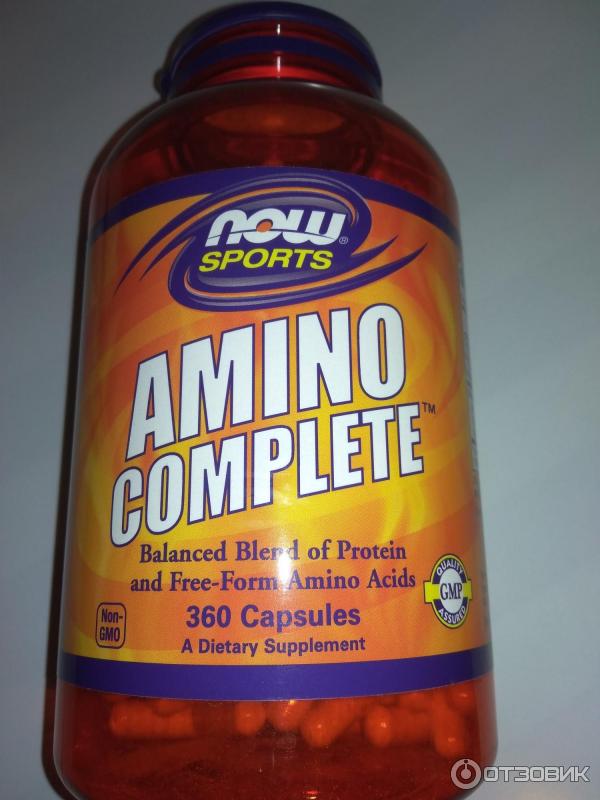 During the production, equipment was used that ensures the production of a product with the specified parameters of the physico-chemical composition and organoleptic properties. The prepared ingredients were weighed, sent to a mixer with a mechanical stirrer, mixed for 15 minutes and used for further research.
During the production, equipment was used that ensures the production of a product with the specified parameters of the physico-chemical composition and organoleptic properties. The prepared ingredients were weighed, sent to a mixer with a mechanical stirrer, mixed for 15 minutes and used for further research.
For sensory evaluation, the dry powder was dissolved in 200.0 ml of drinking water at a temperature of 20-25 about C. The results of the organoleptic evaluation indicated the need to adjust the dose of the amino acid L-arginine, taste and total solids content in the finished product.
The amount of the amino acid L-arginine has been increased to 2000 mg. In order to correct the organoleptic parameters, a water-soluble rosehip extract, lactulose, oat extract, citric acid and natural flavors of lemon, plum, cherry and a sweetener were used. Taste and odor correctors were used to eliminate the bitter taste inherent in the amino acid L-arginine. Variants of the developed formulations are shown in Table 3.
Table 3 - Variants of developed recipes
| No. p/n | Ingredients | Unit measurements | Formulations | ||
| 1 | 2 | 3 | |||
| 1 | L-Arginine | mg | 2000 | 2000 | 2000 |
| 2 | Water-soluble rosehip extract | mg | 250 | 700 | 250 |
| 3 | Water-soluble oat extract | mg | - | - | 250 |
| 4 | Lactulose | mg | - | 400 | 800 |
| 5 | Isomalt | mg | 1050 | - | - |
| 6 | Citric acid | mg | 70 | 150 | 70 |
| 7 | Ascorbic acid | mg | 50 | 50 | 50 |
| 8 | Lemon flavor | mg | 50 | - | 50 |
| 9 | Plum flavor | mg | - | 50 | - |
| 10 | Cherry flavor | mg | - | 50 | - |
| 11 | Sweetener | mg | 30 | 100 | 30 |
| Total: | mg | 3 500 | 3500 | 3500 | |
The prepared ingredients were mixed in a mixer, then the obtained dry powder was dissolved in 200. 0 ml of boiled water at room temperature.
0 ml of boiled water at room temperature.
The results of the organoleptic evaluation testified to the "empty taste" of the finished drink. Taking into account this opinion of the tasters, it was decided to adjust the developed recipes. The total weight of the dry drink has been increased to 5.0 g and 10.0 g.
These formulation options are shown in Table 4.
Table 4 - Formulation Options
| No. p/n | Ingredients | Unit measurements | Formulations | |
| 1 | 2 | |||
| 1 | L-Arginine | mg | 2000 | 2000 |
| 2 | Water-soluble rosehip extract | mg | 1000 | 3500 |
| 3 | Fructose | mg | 1000 | 3200 |
| 4 | Citric acid | mg | 700 | 1000 |
| 5 | Ascorbic acid | mg | 100 | 100 |
| 6 | Plum flavor | mg | 100 | 100 |
| 7 | Cherry flavor | mg | 100 | 100 |
| Total: | mg | 5,000 | 10,000 | |
All obtained samples had good solubility, had a pleasant color and were characterized by transparency.
The combination of ingredients in the formulations was chosen as the most acceptable, as it allowed the maximum veil of the unpleasant smell and taste of the added arginine. The composition of the recipe includes L-arginine, dry extract of rose hips, fructose, citric and ascorbic acids, natural flavors.
Thus, the conducted studies indicate the possibility of using L-arginine in the creation of baby food. According to the results obtained, the recipes for a drink intended for use in the nutrition of obese children have been developed. Based on the results of the organoleptic evaluation of the product, a variant of the product in the form of a dry instant drink based on rose hip extract was selected for further research. The optimal dosage of L-arginine was 1 g/100 ml of the ready-to-use product.
Conclusion
Research in this direction continues and provides for the creation of new technologies for obtaining a product with a high content of the amino acid arginine. Considerable attention will be paid to the selection of raw materials and components containing natural forms of the amino acid arginine, since natural food sources are more acceptable in terms of acceptance by the body.
Considerable attention will be paid to the selection of raw materials and components containing natural forms of the amino acid arginine, since natural food sources are more acceptable in terms of acceptance by the body.
| Financing Research work on the preparation of the manuscript was carried out at the expense of a subsidy for the implementation of the state task within the framework of topic No. 0529-219-0060 "Development of specialized products for children's and gero-dietary nutrition and evaluation of their effectiveness." | Funding The research work on the preparation of the manuscript was carried out at the expense of a grant for the implementation of a state task within the framework of the topic No. 0529-219-0060 "Development of specialized nutrition products for children and the elderly and evaluation of their effectiveness". | ||||||||||||||||||||
Conflict of interest Not specified. | Conflict of Interest None declared. | Jobgen W. Dietary L-arginine supplementation reduces white fat gain and enhances skeletal muscle and brown fat masses in diet-induced obese rats / W. Jobgen, C. J. Meininger, S.C. Jobgen et al. // J Nutr. 2009Feb;139(2):230–7.
| amino acid name | daily requirement (mg per 1 kg of body weight) |
| tryptophan | 22 |
| lysine | 150 |
| methionine | 65 – 85 |
| leucine | 150 |
| isoleucine | 90 |
| phenylalanine | 90 |
| threonine | 60 |
| valine | 93 |
| histidine | 32 |
Animal proteins are better absorbed by the body because they contain all the amino acids the body needs. Vegetable proteins are less valuable. The composition of cereals, bread, vegetables and fruits includes proteins with an incomplete set of essential amino acids.
Vegetable proteins are less valuable. The composition of cereals, bread, vegetables and fruits includes proteins with an incomplete set of essential amino acids.
Some of them are found in small quantities. The largest amount of complete proteins in soy, peas, beans, buckwheat, rye, rice, potatoes. The biological value of protein in the diet will increase significantly if you correctly combine various products of animal and vegetable origin. So, milk protein rich in lysine, supplementing the amino acid composition of flour, poor in lysine, increases the nutritional value and digestibility of bread.
It is advisable to combine flour products with fish or meat, the proteins of which are rich in lysine and methionine. Equally justified is the preparation of dishes in which milk is combined with cereals. The protein value of an egg increases when it is eaten with potatoes.
The content of amino acids in the products of the daily diet is recommended to be calculated using the data in the table "The content of essential amino acids in animal and plant foods".
Each meal must contain a sufficient amount of essential amino acids in their optimal ratio, otherwise the basic rule for the utilization of amino acids by the body is violated: for the normal course of protein synthesis processes, essential amino acids must be supplied at optimal times, as well as in optimal concentration and ratio.
Three amino acids deficiencies are most common in diets: tryptophan, lysine and methionine. Therefore, food products included in the diet are evaluated primarily by the content of these essential amino acids.
Tryptophan
The main sources of tryptophan are meat, fish, cottage cheese, cheese, eggs. Different parts of meat carcasses contain different amounts of tryptophan. For example, connective tissue proteins (shank, flank, neck) are almost devoid of it. The most valuable in terms of tryptophan content are such parts of the carcass as tenderloin, thin and thick edges, and the flesh of the hind leg.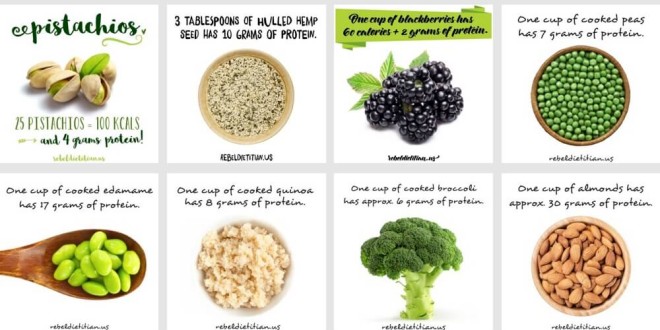 In the daily food product of children - milk - tryptophan is less than in
In the daily food product of children - milk - tryptophan is less than in
meat, fish, eggs. However, from 500 g of milk a child receives 250 mg of tryptophan, i.e. more than from 100 g of beef.
Important additional sources of tryptophan are plant products: peas, beans and especially soybeans.
Lysine
The main source of lysine is milk. 500-600 g of it covers the need for lysine by about 40-45% of the daily requirement. There is a lot of lysine in meat, fish, legumes, as well as in cottage cheese and cheese, in the yolk of eggs (186 mg of lysine in one yolk).
Methionine
,
The need for methionine is met to a large extent (by 40-45%) by the proteins of milk and dairy products. Along with dairy products, sources of methionine are meat, fish, eggs, and from plant products - legumes, buckwheat.
The content of methionine in some types of fish (mg per 100 g) is as follows: horse mackerel - 700, zander, pike - 534, mackerel, pollock -600, cod, sea bass, carp - 500
There is more methionine in meat of the 2nd category than in meat of the 1st category (515 and 445 mg per 100 g of pulp, respectively).
Of the three essential amino acids, methionine is the most difficult to provide to a child.
An objective indicator of the optimal balance of a product or diet in terms of methionine content is the ratio of methionine to tryptophan, taken as 1. The higher the ratio of methionine: tryptophan in the product, the more profitable it is to include such a product in the diet to improve the balance of its amino acid composition.
Of all the protein-containing products in terms of the ratio of methionine: tryptophan, fish ranks first, followed by low-fat cottage cheese, meat, and eggs.
In the synthesis of proteins, each type of body tissue requires a strictly specific set of amino acids.
For example, tissue proteins contain valine, arginine and tryptophan in equal amounts (1 : 1 : 1), but if their ratio in the diet is 1:1:0.5, then the assimilation of all these amino acids is determined by the amino acid, contained in the minimum amount. Therefore, a ratio of 1 : 1 : 0. 5 will result in protein loss. Some undigested amino acids, when accumulated in the blood in high doses, can have a toxic effect. As you can see, rational selection of proteins from different products , taking into account their mutual complementation, is very important when compiling the menu .
5 will result in protein loss. Some undigested amino acids, when accumulated in the blood in high doses, can have a toxic effect. As you can see, rational selection of proteins from different products , taking into account their mutual complementation, is very important when compiling the menu .
Fat is not only a concentrated source of energy for the body, but also a plastic material. More than 30% of the energy in the body of an adult and about 50% in an infant is formed due to the oxidation of fats from food. The value of fats for the body is also determined by the content of fat-soluble vitamins A, D, E and a number of biologically active substances: lipoidophosphatides (lecithin, cephalin), polyunsaturated fatty acids (PUFAs), sterols. Fats have a significant impact on the taste of food, its nutritional value and saturation of the body with food.
Milk and vegetable fats are mainly used in baby food.
High palatability of milk fats, low melting point, good digestibility, the presence of biologically active high molecular weight fatty acids, their favorable balance, the content of vitamins A, D2, carotene, tocopherols, phosphatides, choline, etc. - all this makes milk fat is indispensable in the nutrition of children. They get it from butter, cow's milk and dairy products.
- all this makes milk fat is indispensable in the nutrition of children. They get it from butter, cow's milk and dairy products.
The product of daily consumption should also be vegetable oil , which, in accordance with physiological norms, is included in the diet of children from the age of 7 months.
Vegetable oils are unsurpassed sources of PUFAs and vitamin E, which are scarce in milk fat, and contain phosphatides. Polyunsaturated fatty acids, especially linoleic, are not synthesized by the body and must be supplied with food. PUFAs contribute to the growth and development of a young organism, its resistance to infection, have a normalizing effect on the walls of blood vessels, increasing their elasticity, and participate in metabolism.
With a lack of polyunsaturated fatty acids, children develop skin lesions in the form of dermatitis, eczema. The norm of vegetable fats for young children is 6 g per day, preschool - 9 g.

.

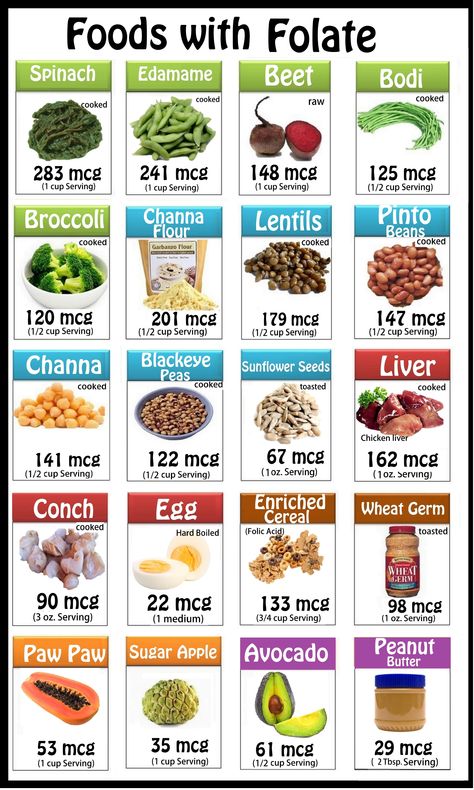 - With. 135-138.
- With. 135-138.  Per. from English. M.: Medicine, 1993, v. 2, p. 386–396.
Per. from English. M.: Medicine, 1993, v. 2, p. 386–396.  Journal them. G.S. Speransky. - 2013. - T. 92, No. 2. – S. 92-99.
Journal them. G.S. Speransky. - 2013. - T. 92, No. 2. – S. 92-99.  Methododicheskie rekomendacii No. 0100/8604-07-34 Chast' 2. [Recommended average daily food sets for children aged 7-11 and 11-18 years. Methodological recommendations No. 0100/8604-07-34 / Collection of normative legal acts on catering in educational institutions. Part 2]. - MOSCOW: Federal Center for Hygiene and Epidemiology of Rospotrebnadzor, 2009. - pp. 135-138 [in Russian]
Methododicheskie rekomendacii No. 0100/8604-07-34 Chast' 2. [Recommended average daily food sets for children aged 7-11 and 11-18 years. Methodological recommendations No. 0100/8604-07-34 / Collection of normative legal acts on catering in educational institutions. Part 2]. - MOSCOW: Federal Center for Hygiene and Epidemiology of Rospotrebnadzor, 2009. - pp. 135-138 [in Russian]  Lucotti, E. Setola, L. D. Monti et al. // Am J Physiol Endocrinol Metab. 2006 Nov;291(5):E906–12.
Lucotti, E. Setola, L. D. Monti et al. // Am J Physiol Endocrinol Metab. 2006 Nov;291(5):E906–12.  practical guide] / edited by A. Michelson. Moscow: GEOTAR-med, 2003, vol. 2.550p. [in Russian]
practical guide] / edited by A. Michelson. Moscow: GEOTAR-med, 2003, vol. 2.550p. [in Russian] 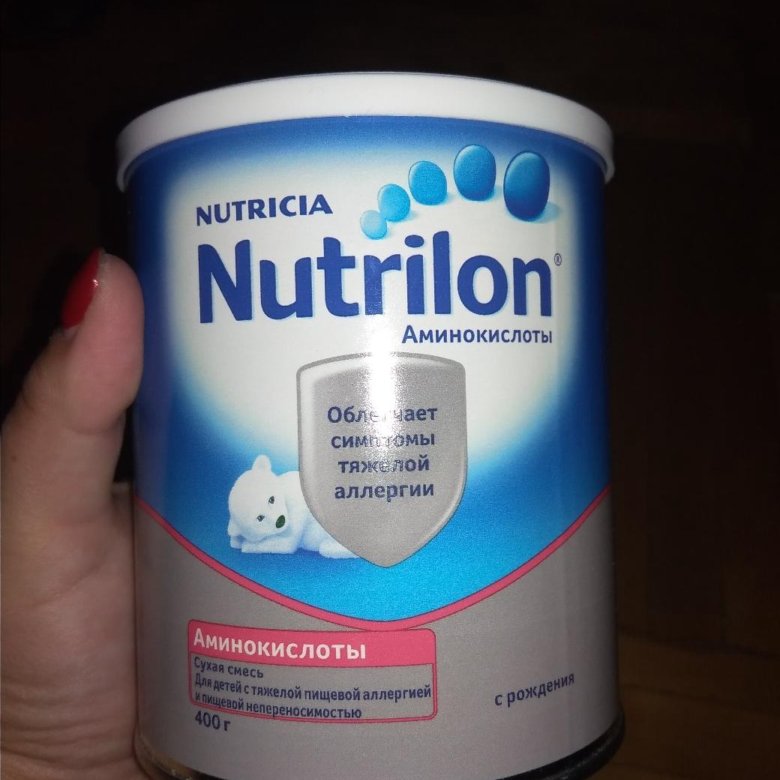 Baturin, E. E. Keshabyants, A. M. Safronova et al. // Pediatrija. Journal im. G.S. Speranskogo [Pediatrics. G.S. Speransky Journal]. - 2013. - Vol. 92, no. 2.-pp. 92-99 [in Russian]
Baturin, E. E. Keshabyants, A. M. Safronova et al. // Pediatrija. Journal im. G.S. Speranskogo [Pediatrics. G.S. Speransky Journal]. - 2013. - Vol. 92, no. 2.-pp. 92-99 [in Russian] 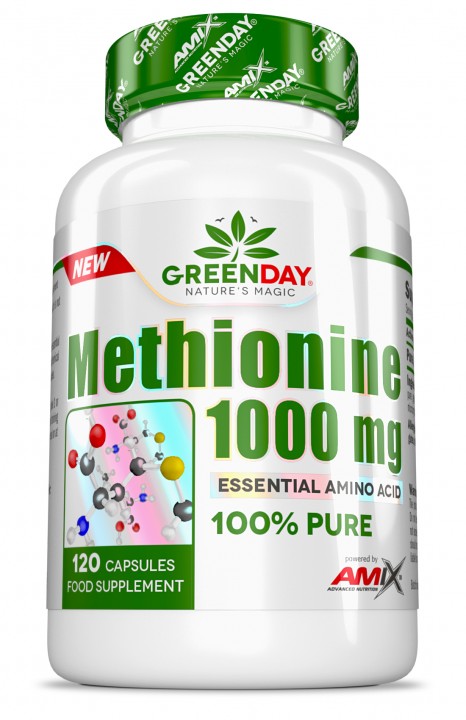 In addition, each of them also performs its own specific functions. Lysine, tryptophan are essential for growth. Lysine and histidine are associated with the function of hematopoiesis, leucine and isoleucine - of the thyroid gland, phenylalanine - of the thyroid gland and adrenal glands, Methionine has a significant effect on the metabolism of fats and phosphatides, provides antitoxic liver function, and plays an important role in the activity of the nervous system.
In addition, each of them also performs its own specific functions. Lysine, tryptophan are essential for growth. Lysine and histidine are associated with the function of hematopoiesis, leucine and isoleucine - of the thyroid gland, phenylalanine - of the thyroid gland and adrenal glands, Methionine has a significant effect on the metabolism of fats and phosphatides, provides antitoxic liver function, and plays an important role in the activity of the nervous system. 









